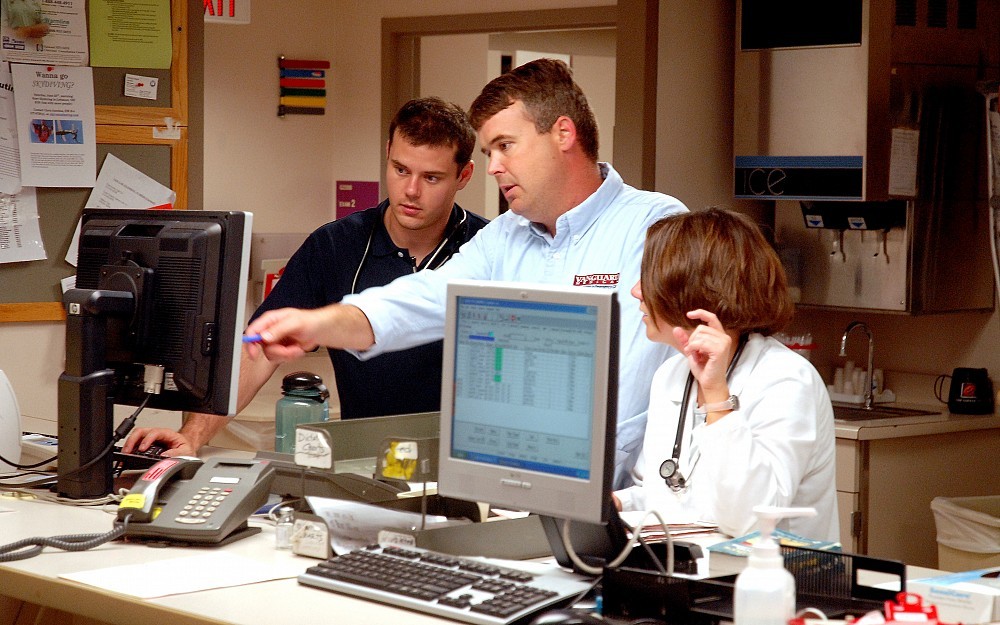
Emergency Department Guidelines Enhance Quality Patient Care
CINCINNATIDefining what constitutes quality careespecially in a large, urban hospitalisnt easy.
University of Cincinnati (UC) researchers, however, are addressing the nationwide problem with a unique system to reduce medical errors and improve patient care in local hospital emergency departments.
Although guidelines for care on select disease conditions may be available in some emergency departments, the UC researchers believe they are the first to develop a comprehensive, evidence-based online system that covers numerous conditions from triage and diagnosis to treatment and discharge.
Weve been developing a system for the last three years to establish evidence-based guidelines and forms for nurses and physicians to use for every aspect of the patients pathway through the emergency department, says Stewart Wright, MD, assistant professor of emergency medicine.
The development and results of the initiative, called the Committee for Procedural Quality and Evidence-Based Practice (CPQE), are reported in the June 26 early online version of Annals of Emergency Medicine.
Many reports have been published on patients suffering from medical care that isnt evidence-based, or supported by clinical research that establishes the optimal approach to care for a particular disease, says Brian Gibler, MD, chairman of UCs department of emergency medicine. We wanted to assess how we were doing in our emergency practice and how we could improve.
Our emergency physicians work in three emergency departments in Cincinnatiat University, Christ and Jewish hospitalswhich makes it difficult to standardize care, he says.
A centralized committee like the CPQE, which focuses on quality care in the emergency department is critical to developing easily accessible, standardized guidelines and protocols, allowing us to provide care that is high quality and uniform at all three hospitals.
The committee began developing and implementing guidelines with a disease that has been well studiedasthma. They took existing guidelines, reviewed literature to update the guidelines with new knowledge, and consulted with pulmonologists to incorporate their needs in the final guidelines.
The guidelines and summary of the literature review were then presented during a monthly, evidence-based meeting in the UC emergency medicine department for input from faculty, residents and nurses. The committee then finalized the physician and nursing guidelines, developed an order set and discharge sheets and put them on the Web at www.cpqe.com.
Since the first one was developed, guidelines for more than 20 other conditions, such as pneumonia, ischemic stroke, diabetes and gallbladder disease, have been added. Nearly 40 instructional discharge sheets for patients are on the site, as well as common medical forms and procedure guidelines.
Guidelines can be very helpful for all physiciansfrom new residents to those with years of experience, says Wright. Anyone can overlook a step in treating a condition at the end of a long shift because theyre tired.
Physicians in the emergency departments at University, Christ and Jewish are not required to use the CPQE tools but are encouraged to do so, and even receive a scorecard based on their performance.
The scorecards include core measures from the Joint Commission on Accreditation of Healthcare Organizations (JCAHO) and CPQE guidelines.
The goal is to make physicians better, because if they find themselves below the mean for procedural complications, such as with inserting a chest tube, it will provide motivation for them to improve, says Wright.
Wright says the scorecards also track which physicians may need more education on a particular therapy or procedure.
In addition, if there are physicians who are doing an excellent job, we want to try to emulate their practice, Wright says.
Wright admits that although nursing staff have embraced the new focus on quality care and the use of guidelines, physicians compliance with using CPQE tools is low. But hes hoping that will change as they continue trying to prove the system actually works.
The shift from relying on memory to utilizing guidelines is challenging for most practitioners, says Wright.
We want to prove the CPQE tools can save lives and money and improve the quality of patient care, and then we expect to be able to bring use of our site or a similar system to the national level.
Collaborators on the study include UC emergency medicine faculty Alexander Trott, MD, Christopher Lindsell, PhD, Brian Gibler, MD, and Carol Smith, RN.

Stewart Wright, MD, is an assistant professor of emergency medicine.

UC Health University Hospital President and CEO W. Brian Gibler
Tags
Related Stories
UC study: Brain organ plays key role in adult neurogenesis
July 2, 2024
The University of Cincinnati has published research in the Proceedings of the National Academy of Sciences that found the choroid plexus and cerebrospinal fluid play a key role in maintaining a pool of newly born neurons to repair the adult brain after injury.
Put down that beer; it's not a tanning lotion
July 1, 2024
The University of Cincinnati's Kelly Dobos joined WVXU's Cincinnati Edition to discuss what's fact and what's myth when it comes to sunscreen use, different kinds of sunscreen and a social media recommendation to use beer on your skin to help get a tan.
Cincinnati researchers want to know if MRIs can work better
June 28, 2024
WVXU and the Cincinnati Business Courier highlighted a new collaboration between the University of Cincinnati College of Medicine, UC Health GE HealthCare, JobsOhio, REDI Cincinnati and Cincinnati Children’s to create an MRI Research and Development Center of Excellence located on UC’s medical campus.
